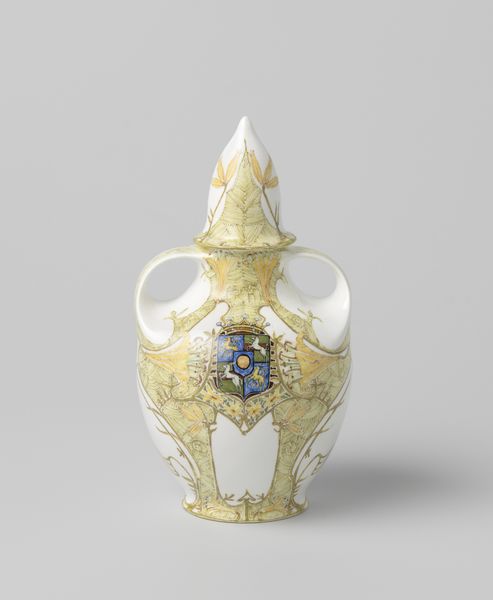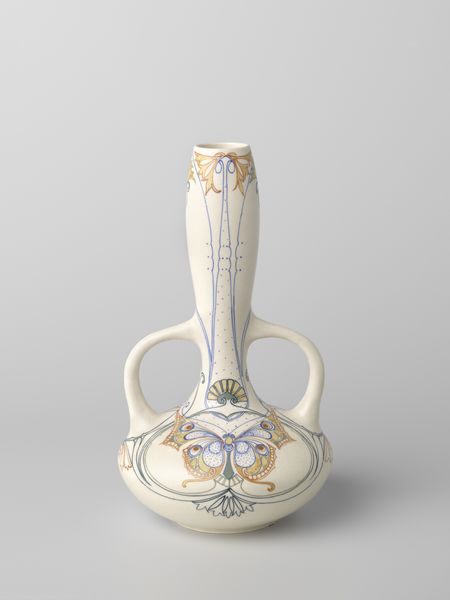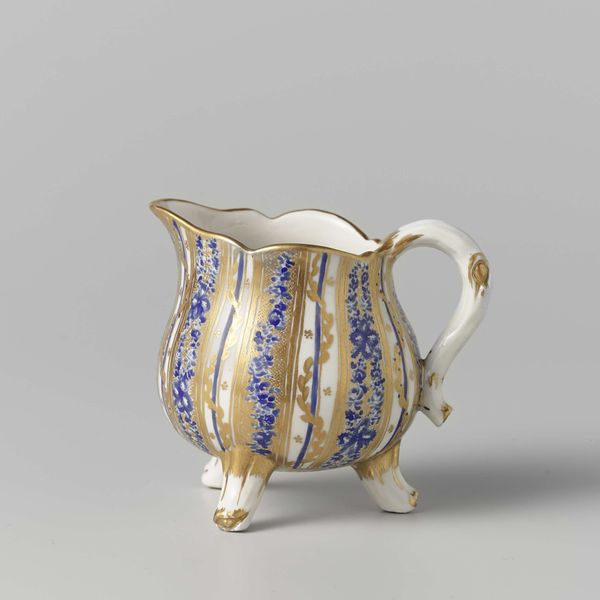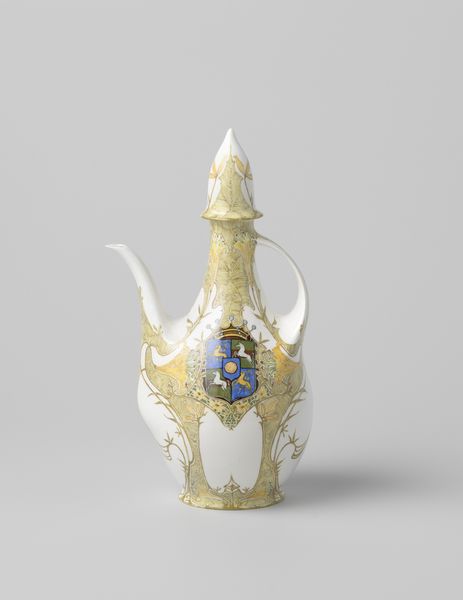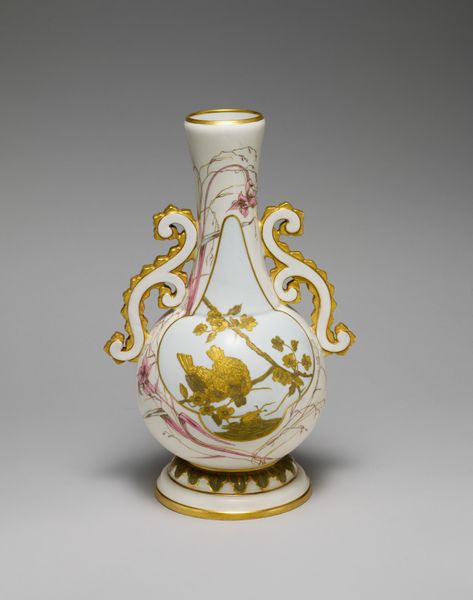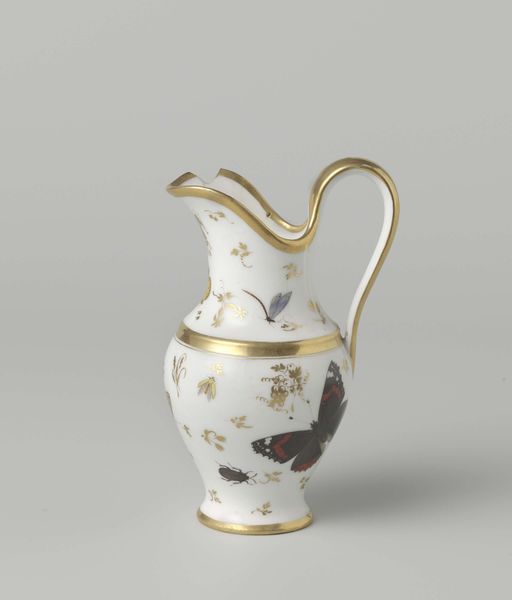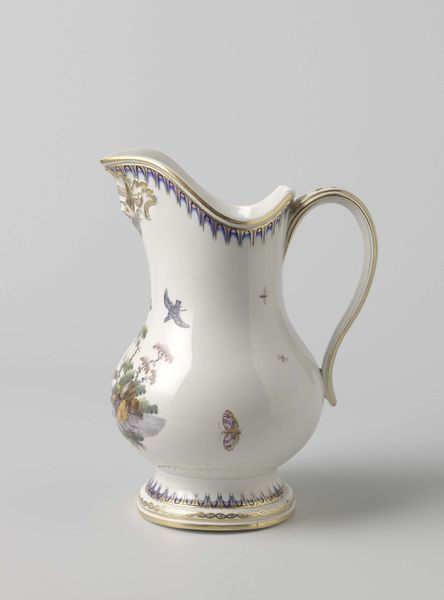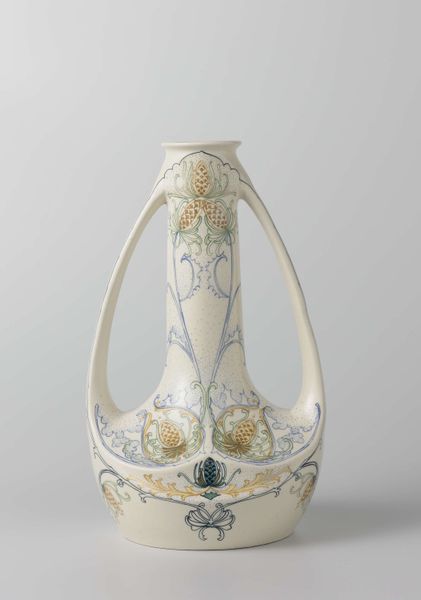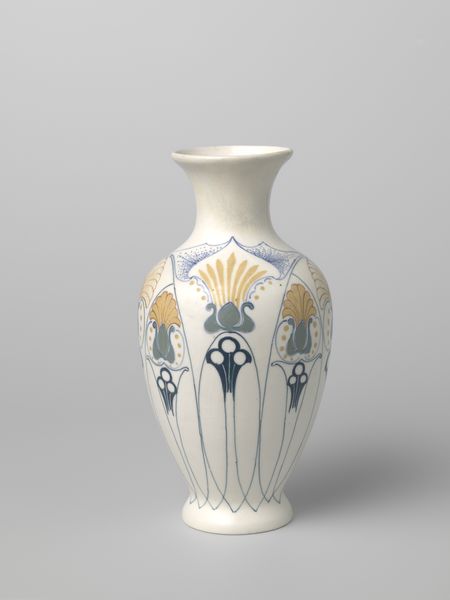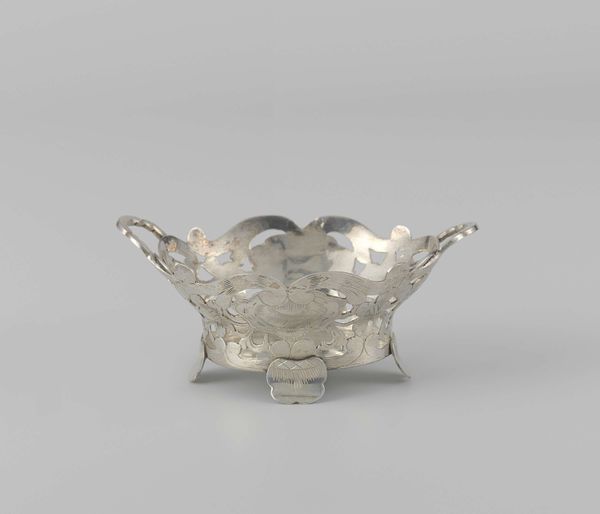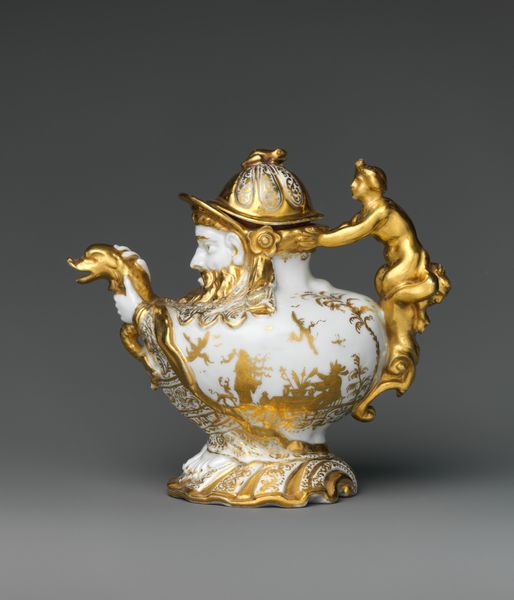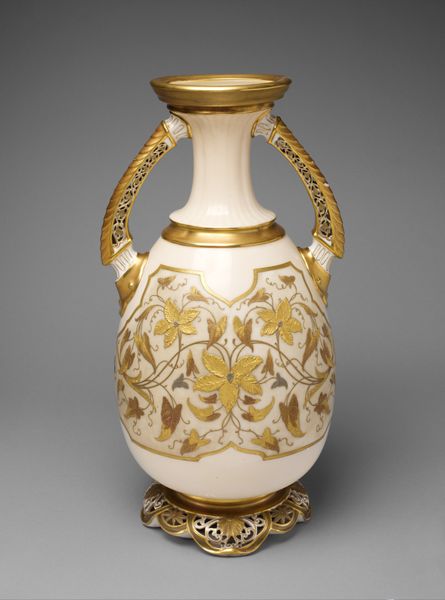
Melkkan, deel van een tête-à-tête, beschilderd met lelies 1900
0:00
0:00
ceramic, earthenware
#
art-nouveau
#
ceramic
#
earthenware
#
decorative-art
Dimensions: height 9.6 cm, width 8.6 cm, depth 7.5 cm
Copyright: Rijks Museum: Open Domain
Editor: Here we have a milk jug, "Melkkan, deel van een tête-à-tête, beschilderd met lelies," crafted around 1900 by N.V. Haagsche Plateelfabriek Rozenburg. The earthenware feels so delicate, and the lilies and coat of arms give it an air of ceremony. What stands out to you about this piece? Curator: The presence of the coat of arms is quite telling. During this period, Rozenburg aimed to elevate Dutch ceramics to compete with porcelain traditions in other countries, particularly France and China. This jug reflects the aspirations of the Dutch bourgeoisie at the time, emulating aristocratic traditions of displaying heraldry. The lily motifs, typical of Art Nouveau, blend a modern aesthetic with symbols of established power. Editor: So it's a statement about social mobility through art? Was it common to see such explicit references to class in decorative arts? Curator: Absolutely. The late 19th century saw a fascination with history and lineage among the rising middle class. Owning decorative objects featuring heraldic symbols became a way to visually associate themselves with established power structures, a kind of performative identity through the domestic space. Why do you think earthenware was chosen over porcelain, though? Editor: Maybe earthenware allowed for a greater level of artistry? Porcelain requires more specific facilities and refined craftsmanship. Curator: Precisely! Earthenware also enabled more direct engagement, as Rozenburg's design relied heavily on individual artists’ skills, promoting their artistic identity along with Dutch industrial aspirations. It became a symbol of a "new" kind of nobility through art and craftsmanship. Editor: I hadn't considered how the materials themselves could contribute to this socio-political narrative. Thanks, that perspective has really changed how I see this jug! Curator: It’s fascinating how seemingly simple objects can reveal so much about societal aspirations and artistic innovation. Always consider what the artwork *does*, not just what it looks like!
Comments
No comments
Be the first to comment and join the conversation on the ultimate creative platform.
